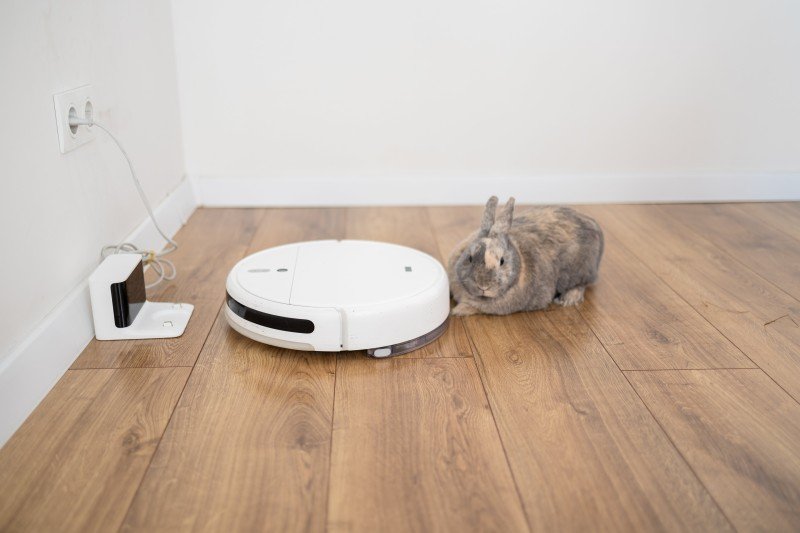5 Laws That Can Benefit The Floor Robot Industry

The Rise of Floor Robots: A Comprehensive Guide
In recent years, the development of floor robotics has changed the landscape of home cleaning and maintenance. Armed with sophisticated innovation, these smart gadgets are developed to decrease human effort while maximizing effectiveness. This post looks into the numerous elements of floor robots, including their functionality, advantages, types, and considerations for purchasing one.
Comprehending Floor Robots
Floor robots, frequently referred to as robotic vacuums or floor cleaners, automate the procedure of cleaning floorings in residential and commercial areas. They make use of a combination of sensing units, mapping innovation, and expert system to browse, recognize dirt, and clean different types of surfaces. This development not only saves time but also improves the efficiency of cleaning efforts.
How Do Floor Robots Work?
Floor robots operate through a mix of hardware and software application parts designed to enhance their cleaning capabilities. Below is a streamlined summary of their operational procedure:
Mapping and Navigation:
- Using Lidar, electronic cameras, or infrared sensors, the robot creates a map of the area.
- It identifies and prevents obstacles, ensuring effective navigation.
Cleaning Mechanics:
- Most floor robots are geared up with turning brushes or suction mechanisms to collect particles.
- They can differ their cleaning modes based upon the type of surface area (carpet, tile, etc).
Dirt Detection:
- Advanced designs utilize dirt-detection sensing units to identify greatly soiled areas and tidy them better.
Self-Charging:
- Once cleaning is complete or the battery runs low, many robotics automatically return to their charging stations.
App Integration:
- Many floor robotics include mobile applications that permit users to schedule cleaning sessions, set cleaning modes, and screen development.
Benefits of Using Floor Robots
The popularity of floor robots can be associated to numerous essential benefits, including:
- Time-Saving: Users can dedicate their time to more essential jobs while the robot manages the cleaning.
- Consistency: Robots can follow a routine cleaning schedule, ensuring a consistently tidy environment.
- Hard-to-Reach Areas: Floor robotics can browse under furnishings and into difficult situations that standard vacuums might have a hard time to reach.
- Reduction of Allergens: Regular cleaning helps in reducing dust and allergens, adding to a healthier home environment.
- User-Friendly: With basic user interfaces and app performance, floor robotics are accessible for users of any ages.
Types of Floor Robots
There are numerous kinds of floor robots available on the market, each created to accommodate various requirements:
| Type of Floor Robot | Description | Best Usage |
|---|---|---|
| Robotic Vacuums | Primarily designed for vacuuming carpets and tough floorings. | Daily cleaning of different surfaces. |
| Robotic Mops | Equipped with a mopping feature for damp cleaning. | Perfect for difficult surfaces requiring wet cleaning. |
| Combo Robots | Combines vacuuming and mopping functionalities. | Flexible cleaning for a series of surfaces. |
| Specialty Robots | Developed for specific jobs (e.g., animal hair removal). | Houses with animals or specific cleaning needs. |
Factors to consider When Buying a Floor Robot
Investing in a floor robot involves several factors to consider to guarantee that the chosen model satisfies the cleaning requirements. Below are some aspects to remember:
Floor Type:
- Consider whether the robot appropriates for carpets, hardwood, tile, or a combination of floor covering types.
Battery Life:
- Evaluate the robot's battery period to identify how long it can clean before needing a recharge.
Suction Power:
- Higher suction power is vital for effective cleaning, especially on carpets.
Navigation System:
- An advanced navigation system contributes to efficient cleaning patterns and much better barrier avoidance.
Dustbin Capacity:
- Larger dustbins need less frequent emptying, which is hassle-free for users.
Smart Features:
- Look for designs with Wi-Fi connectivity, app support, and voice control compatibility for included convenience.
Frequently Asked Questions about Floor Robots
Q1: How much do floor robots cost?A1: Prices can range from ₤ 200 to over ₤ 1,000, depending on features and brand.
Q2: Can floor robotics tidy several floor types?A2: Yes, numerous robotic vacuums are created to be efficient on both carpets and difficult floors. Q3: How typically must I run my floor robot? best robot vacuum UK : For optimum results, it is suggested to schedule day-to-day or bi-weekly cleaning depending upon foot traffic and family pet presence. Q4: Do floor robots work well with pet hair?A4: Models particularly designed for pet owners contain
more powerful suction power and unique brushes to successfully remove animal hair. Q5: Can I manage my floor robot remotely?A5: Most modern-day floor robots include app connectivity, enabling you to control them remotely from your
smartphone. The development of floor robotics represents a considerable development in home cleaning technology. Combining efficiency, user-friendliness, and advanced functions, these gadgets offer a glimpse
into the future of home upkeep. As customers progressively seek services that save time and promote tidiness, the floor robot market is poised for continued growth and innovation. With a range of options readily available, understanding their workings, benefits, and performances can assist users select the ideal addition to their cleaning regimen.

